Reading Comprehension Text and Exercises
Delicious Desserts from Four Continents
Some of the World's Most Famous Desserts
Desserts are everyone's favorite part of the meal. In most cultures, these delicious sweet dishes come at the very end of the main course, and can be served in all shapes and tastes – cakes, cookies, pies, even sweet soups, you name it!
Despite millions of dessert recipes available in recipe books, there are some which have absolutely conquered the world with their unique tastes, causing pure happiness and bliss when eaten. But how did desserts come about in the first place?
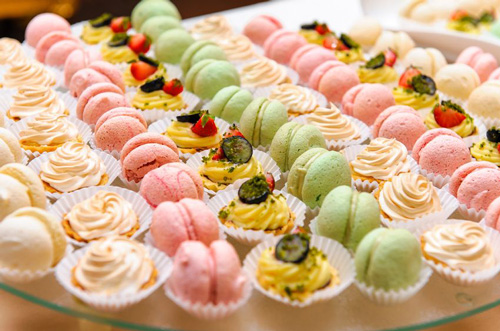
Click Here for Step-by-Step Rules, Stories and Exercises to Practice All English Tenses
A Brief History of Desserts
- The English word "dessert" is derived from French desservir, which means "to clear the table", referring to the custom of serving dessert only after the table has been cleared of other dishes.
- Historians normally agree that dried fruits and honey were the first sweeteners after put in other dishes to make them sweet. Ancient civilizations in Mesopotamia and India prepared sweets as their gifts to the gods.
- Nonetheless, the discovery and spread of sugarcane marks the most important moment in the history of desserts. The Indians grew it 2,500 years ago, but it was only in 500 AD that sugar was crystalized and traded to China.
- Sugar was brought to light to the Europeans even later, in the 12th century, during the Crusades (wars to spread Christianity). In 1381, the first apple pie recipe was published.
- High prices of sugar persisted until the Industrial Revolution, so desserts were mostly reserved for the wealthy.
Cheesecake, the U.S.
Modern cheesecake spread across the world as an American product. It was developed in 1872 by accident when William Lawrence was trying to recreate soft French cheese. Instead of cheese, he came up with heavier, creamy base that is now part and parcel of the cheesecake. Yet, it is speculated that ancient Greeks also made a form of cheesecake.
Some say that the athletes competing at the first Olympic Games in 776 B.C. ate cheesecakes for energy. Greek physicians Aegimus even wrote an entire book on the art of making cheesecakes in the 5th century. Nowadays, the bottom layer, or the crust, normally consists of crushed cookies, and is covered with the thickest cheesy layer, and topped with fruit.
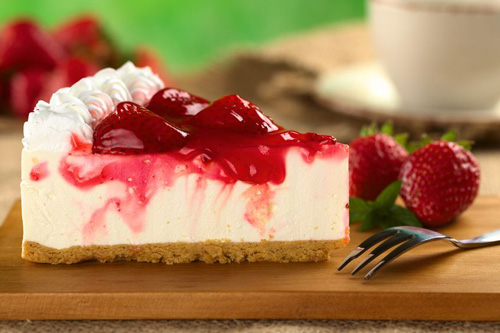
Crème Brûlée, France
Also known as "burnt cream" or "cream catalana", this dessert is unique for its rich custard base topped with a layer of hard caramel. This is one of the oldest known desserts in Europe, having appeared in Catalan cookbooks in the 14th century.
Under the name of crème brûlée, it first showed up in a 1691 cookbook with recipes for royals and bourgeoisie (the rich). Crème brûléeis always served in individual ceramic bowls.
Nowadays, it is popular to form the caramel directly on top of the custard. To complete this task, a butane torch is used to burn the sugar, causing a small flame, which makes the serving of the dessert very festive.
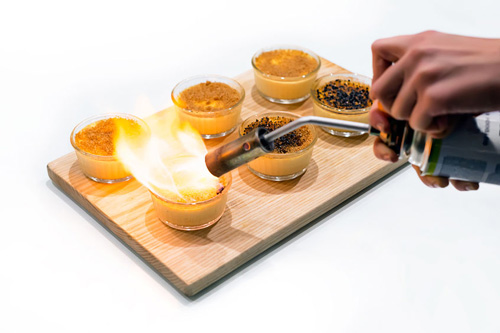
Baklava, Turkey and the Caucasus
The combination of filo pastry and chopped nuts held together with syrup or honey is known all over the world as baklava. Because baklava is the national dessert of several countries in Asia Minor and the Middle East, its etymology is inconclusive, having links to Mongolian, Persian and Turkish.
The 15th century origin of the current form of baklava is well-known – it was the Turkish sultan residing in Istanbul who sent baklava trays to his young soldiers during the month of Ramadan (the 9th month of the Islamic year, when Muslims do not eat or drink between dawn and sunset). Before that, ancient Romans ate a similar layered dough dessert they called placenta cake.
Nowadays, baklava can be bought on the streets of every major city in the region. It is sold per small piece, but buying more than one serving is simply irresistible.
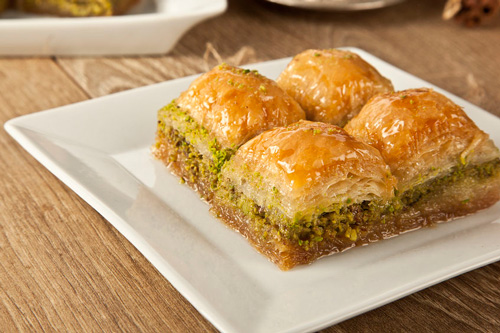
Gulab Jamun, India
Everyone in Southeast Asia has heard of gulab jamun, a traditional Indian desert prepared since the medieval times. The word gulab comes from Persian for "flower and water", while jamun in an Indian fruit which has a similar size and shape like this dessert.
Gulab jamun is created when milk solids are kneaded into a dough, shaped into small balls, deep-fried and soaked in sugary syrup flavored with rose water.
Being easy to make, yet delicious, this dessert is eaten at all major celebrations such as marriages and birthdays. Both Hindu and Muslim communities in India share the love for this dessert, so they traditionally make it for their religious holidays.
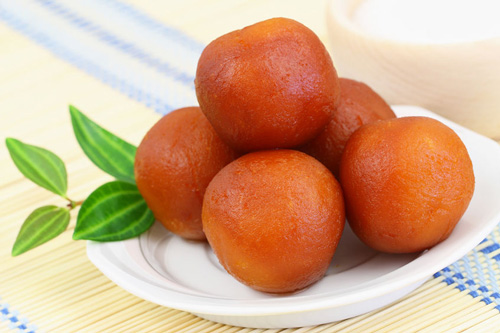
Comprehension Exercises
Vocabulary Questions
- What does "part and parcel" mean?
- dividing a cake into layers
- rarely used ingredient
- essential component
- What does "crystalized" mean?
- turned into a solid form
- made more see-through
- become really expensive
- What does "custard" mean?
- savory food that tastes like mustard
- caramelized sugar
- sweet food made of eggs and milk
- What does "festive" mean?
- not seen before
- cheerful, celebratory
- risky, dangerous
- What does "knead" mean?
- do woodwork
- work or massage with hands
- bake until crispy
Collocation Questions
- Not many people know how desserts initially came __________.
- around
- about
- above
- The discovery of sugarcane is the most important __________ in the history of desserts.
- minute
- mark
- moment
- Cheesecake __________ across the world as an American product.
- spread
- proliferated
- shared
- In Europe, sugar was brought to __________ quite late.
- surface
- reality
- light
- The custard base is topped with __________ caramel.
- firm
- solid
- hard
- Ancient Romans also ate sweet __________ dough.
- layered
- blanketed
- coated
- In baklavas, filo pastry and chopped nuts are held __________ by honey.
- in
- together
- around
- Gulab jamun is made from carefully cooked milk __________.
- solids
- structures
- lumps
- To __________ the task of forming caramel directly, you need to use a torch.
- end
- settle
- complete
- Before serving, deep-fried milk-based balls are __________ in syrup.
- soaked
- drenched
- swamped
Wh Questions
- What proves that ancient Greeks ate cheesecakes?
- remnants of a 2,000 year-old cheese cake
- a documentary about the first Olympic games
- a book by Aegimus
- Who ate sugar-based desserts before the Industrial Revolution in Europe?
- mostly the rich
- mostly peasants
- nobody
- Why are torches sometimes used to serve crème brûlée?
- only for birthday parties
- to burn sugar directly on top of the custard
- to ensure the dessert is always served warm
- How did the modern variation of baklava become popular?
- thanks to a Turkish Sultan
- through the Roman expansion
- due to the Industrial Revolution
- When is gulab jamun commonly eaten?
- on the New Year's Eve
- for breakfast
- at birthday parties and weddings
Evaluating Statements
- Based on the information in this lesson, which statement is true?
- Sugar was the first sweetener developed by ancient Mesopotamians.
- Honey was the first sweetener developed by ancient Mesopotamians.
- Based on the information in this lesson, which statement is false?
- Crème brûlée is served in big pots and normally cut to 16 smaller pieces.
- Crème brûlée is served in small and separate pots.
True or False?
- Based on the information in this lesson, is the following statement true or false?
"Europeans used sugar in several pie recipes already in the 11th century." - True
- False
- Based on the information in this lesson, is the following statement true or false?
"The person who invented cheesecake in the U.S. was actually trying to make cheese, not a cake." - True
- False
Answer Key
1. C | 2. A | 3. C | 4. B | 5. B | 6. B | 7. C | 8. A | 9. C | 10. C | 11. A | 12. B | 13. A | 14. C | 15. A | 16. C | 17. A | 18. B | 19. A | 20. C |21. B | 22. A | 23. B | 24. A
Get Updates, Special Offers, and English Resources
Download your FREE GIFT (the first two chapters of
English Short Stories Book and Workbook)
as soon as you join!

By submitting your email, you consent to receiving updates and newsletters from us and to the sharing of your personal data with third parties for the purposes of sending you communications. We will not spam you. You can unsubscribe at any time. For more information, please see our privacy policy.





